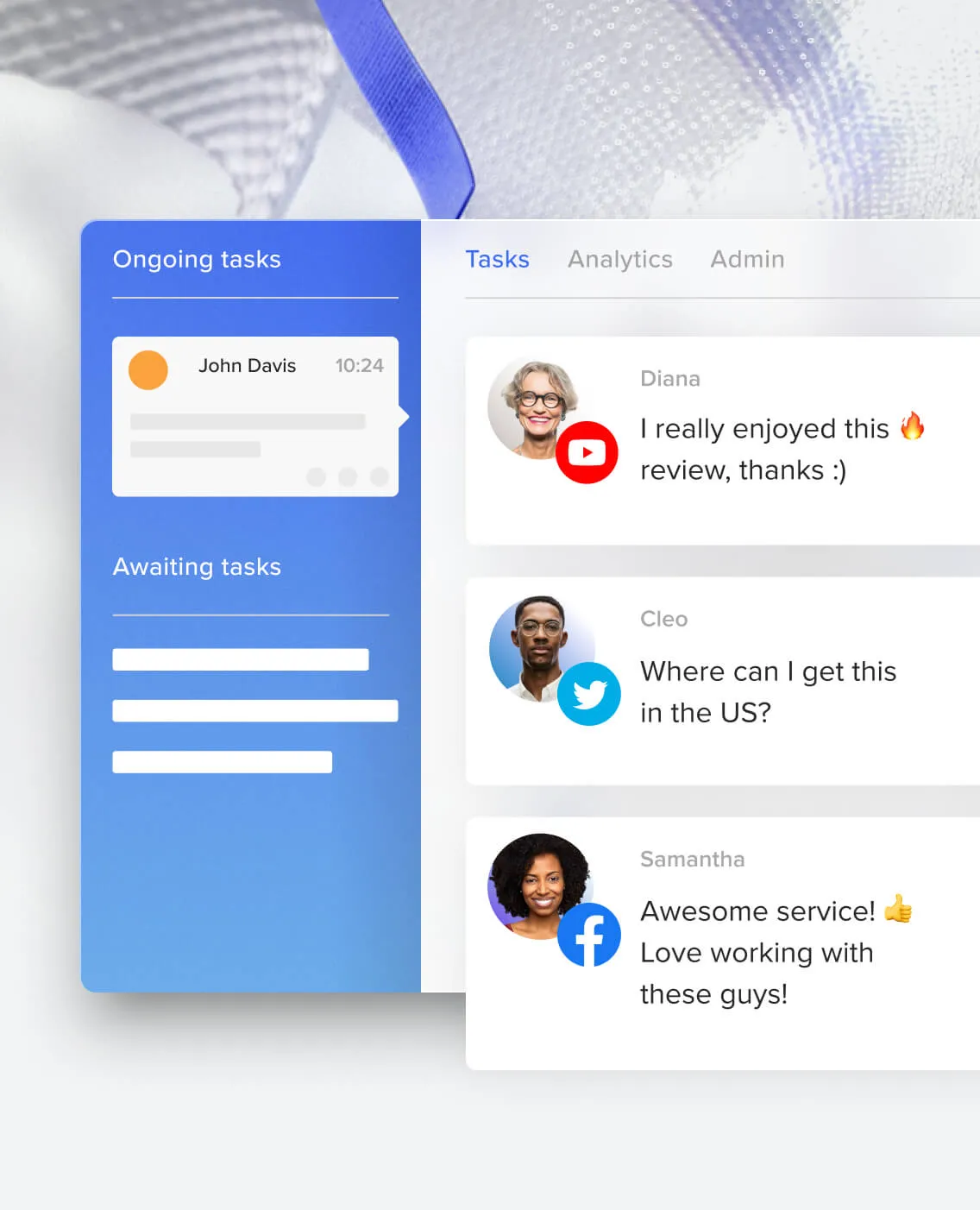In the fast-paced world of startups, the competition—for attention, for launch funding and for customers—is intense. So is the pressure to establish yourself in the marketplace; if your investors don’t see a satisfactory return on their investment reasonably quickly, they’re going to start asking themselves what’s going on.
If your new startup has succeeded in attracting the requisite level of financial support from investors, congratulations! Given the level of competition for that funding, this in itself is a real achievement, and an important step forward towards meeting your ultimate business objectives. With that funding, you can begin to build your business and move forward.
In this guide, we’ll look more closely at what to focus on in the immediate post-funding phase:
- Attracting the right talent
- Finding the best technology to support startup growth
- Winning (and retaining) customers
- Seeking out customer feedback
- Investing your startup funding wisely
🚀 Startup Checklist: Does your business have everything it needs to grow?
1. Attracting the right talent
Another vital concern for startups is finding the right talent. We’ve already noted the intensity of the competition for funding and customers. The competition for talented and experienced staff is no less strenuous. If you want to find the right people for your business, you need to know how to reach them and how to match their level of ambition.
To attract potential recruits, you need to publicize your brand. Make sure that it’s visible in the right places. Make good use of social media to spread the word, and ensure that your website looks the part. Authoritative content can reassure potential hires that your business is legitimate and genuinely ambitious for the future.
There are a few other points you should remember. In particular, be prepared to give non-graduates a chance. There are plenty of people who have diverse skills, without having obtained a university degree. Freelancers can also help you plug gaps and address challenges in the early stages of running a business, so don’t be afraid to call on them.
Remember, a good salary isn’t the only thing that might make a job attractive. Employees are looking for a vision and a journey that they can be a part of. If you can convey this to potential recruits, you’re likely to have more success in hiring. Don’t forget other benefits like remote working, flexible hours, or in-house learning. These extra perks are increasingly important to employees.
Being open to hiring remote employees expands your talent pool from “within driving distance of the office” to the entire planet. Learn how to recruit and hire remote employees.
2. Finding the best technology to support startup growth
Investing in the right technological tools can also help boost growth. Think about the key areas you need to cover. Effective communication and collaboration are particularly important, as they’re the cornerstone of any successful new business. In this age of remote working, you need the right tools to help your business manage this transition.
Investing in the right tools can enhance your business’s prospects of future growth and, potentially, give you a crucial competitive edge over your rivals. It’s likely to make your customers happier, too.
Unified communications as a service (UCaaS)
Unified communications as a service is helping businesses around the world—from brand-new startups to multinational firms—to meet their potential. The ongoing technological revolution in business offers startups huge potential for growth, and cloud-based tools like RingCentral’s UCaaS platform are helping them to do just that.
RingCentral’s UCaaS platform brings a plethora of communications tools—across both mobile and desktop—together in the same place. Integrated voice and messaging communications tools facilitate closer collaboration, allowing your colleagues to work efficiently with one another, wherever they happen to be.
Indeed, because UCaaS solutions are cloud-based—in other words, they’re accessible to users via cloud computing—they allow employees to work from anywhere (so long as they have a good internet connection) and across various devices. This means that your business can offer remote working, which is an attractive option for many potential recruits (and saves you money on rent).
Customer experience (CX)
We’ve repeatedly emphasised the importance of the customer experience, but it’s worth repeating this again here. If your customers don’t receive the standard of service they’ve come to expect, they can simply take their business elsewhere. This is why it’s worth investing in software tools that can help to enhance the customer experience.
RingCentral’s cloud-based contact center solution is one such tool, and it can transform your customer experience. With RingCentral Contact Center™, you can ensure that customer queries are dealt with more efficiently, driving up overall standards of customer service. This allows for a better all-round customer experience, giving customers more reason to return.
Investing in a CRM (customer relationship management) solution that integrates with your contact center is vital. That way, your team can personalize their service, building stronger relationships with customers and encouraging them to keep coming back.
Customer service and the customer experience
The customer experience is vitally important. Today, consumers are more powerful than they’ve ever been, because they have more choice at their disposal than ever before. If they have a bad experience with one business, it’s easy to move on to another. Fostering lasting customer loyalty is much harder than it once was.
As well as being confident in your product or service, you must also consider how to meet customers’ increasingly demanding expectations. According to research from PWC, customer experience is so important to consumers that 86% of them are willing to pay more for a great one. However, 32% will walk away from a brand altogether after just a single bad experience.
High standards of customer service are a must, and you need to think about which tools would help you deliver them. UCaaS solutions greatly simplify communications both internally among colleagues and externally with customers. Consumers expect to be able to interact with brands across multiple channels, and RingCentral’s remote support solution does exactly this. It allows your team to handle customer queries and work collaboratively with colleagues. It can also incorporate digital channels like live chat and social media, making it easier for your customers to get whatever assistance they need.

3. Winning (and retaining) customers
As we’ve discussed, attracting and keeping customers can be just as challenging as securing initial funding. It’s always a good idea to look at things from the consumer’s point of view. Consumers are constantly being bombarded with demands for their attention and money; unless your business can stand out from the crowd, it will struggle.
To succeed, you need to think very carefully about which customers you’re trying to reach to support—and how. You might assume that the best way to do this is to spend big on marketing. Of course, marketing has its place, but you can’t just throw money at it and expect it to deliver miracles. A targeted approach, backed by thorough research, will be much more effective.
Once you have the customers or clients, it’s critical to retain them. Why? According to research, building a long-term relationship with a newly acquired customer can be up to 16 times more expensive than maintaining a relationship you’ve already established with an existing customer.

4. Seeking out customer feedback
As unpleasant as it is to think about, it’s worth remembering that the vast majority of startups fail. In fact, the failure rate for new startups is around 90%—and about 10% of those businesses fail within the first year of their existence. The most common reason why startups fail is poor product-market fit (this affects 34% of failed firms) while the second most common reason (affecting 22%) is marketing problems.
Your first customers can help you learn vital lessons if you give them the opportunity to express their views.Perhaps you’re a little reluctant to reach out to your customers. It’s true that they’re busy people. But clients and customers are generally very happy to give their opinions when asked. Most of them appreciate it when businesses take the time to seek their views, especially when they can see you acting on their feedback. Embracing customer surveys early on and making them part of your business process will only benefit your startup.
It’s worth remembering that absorbing customer and client feedback becomes more difficult as your business grows. That’s why it’s particularly important to seek the views of your earliest customers, as they can give you vital pointers. Too many businesses assume they’ve got it all worked out right from the start, but this can lead to disaster. Let your customers help you, as they’ll be more than willing to do so.
5. Investing your startup funding wisely
Obviously, the difficulty of obtaining funding for startups makes it all the more important to invest that funding responsibly. In the next section, we’ll talk more about how you can invest in the right software tools and thereby boost growth. For now, it’ll suffice to talk about how you can make your money stretch that bit further.
First and foremost, you need to concentrate on investing in your product or service. Make sure you have the resources you need for this. Your service or product is your key moneymaker and what’s going to make the difference between success and failure. If you’re going to avoid cutting corners anywhere, it ought to be here.
Think about what we’ve already said with regard to customer engagement. Tools like RingCentral’s Engage Digital platform can help customers interact with your business in a quicker and more convenient manner. It allows customers to reach out to your team through any digital channel, including social media, email, and live chat.

Spending elsewhere is less of a priority. Some startups spend lavishly on their premises, but ask yourself: is this necessary? Do you really need luxurious, well-appointed offices at this early stage of your business’s life? Of course, appearances matter to both clients and potential employees, but your funding needs to drive growth first and foremost.
This principle should also extend to your burn rate on advertising. As we mentioned earlier in this post, your marketing budget needs to be carefully calibrated for maximum impact. Your advertising strategy must be data-driven for maximum return on investment. Keyword research and a straightforward sales funnel will be crucial to achieving this objective.
Take your new startup to the next level
Starting a new business is never easy, but that’s part of the attraction. Once you’ve successfully obtained the funding you need to get your startup off the ground, you’ve taken a big step forward. You just need to make sure that you invest that money wisely. The decisions you take early on will have a significant bearing on your business’s future success.
With the right audience, the right talent, and the right tools, you’ll be in a strong position to make your business a success. You’ll encounter plenty of other challenges along the way, but you should be well placed to handle them. Good luck!
Originally published Jun 10, 2021, updated Dec 30, 2022




